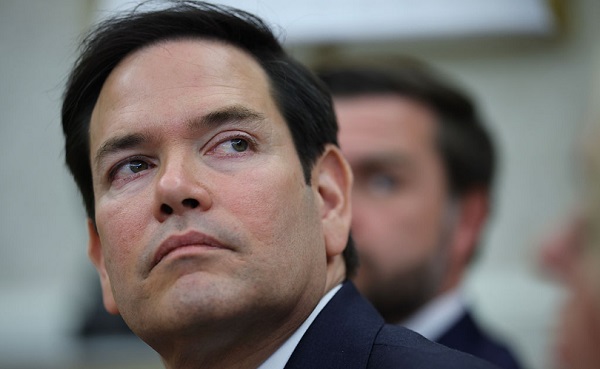Alberta
Albertans endure some of the longest health-care waits in Canada

From the Fraser Institute
By Mackenzie Moir and Tegan Hill
Alberta’s long wait times come despite high levels of health-care spending. The province ranked second-highest on health-care spending per person (adjusted for age and sex) among provinces in 2021
Last week, the president of the Alberta Medical Association sounded the alarm about Alberta hospital wait times, saying they’re as “as bad as we’ve seen it in 25 years.”
But in fact, it’s worse than that.
According to a new study, in Alberta the median wait in 2023 between a family doctor’s referral for a specialist appointment and receipt of treatment was 33.5 weeks—that’s the longest total median wait outside the Maritime provinces and almost six weeks longer than the national median wait (27.7 weeks). And Albertans now wait 23 weeks longer than they did in 1993 when the wait for care was only 10.5 weeks.
Alberta’s long wait times come despite high levels of health-care spending. The province ranked second-highest on health-care spending per person (adjusted for age and sex) among provinces in 2021, the latest year of available data. In 2023/24, health-care spending will consume a projected 41.2 per cent of Alberta’s program spending.
Moreover, Canada itself is a relatively high spender among universal health-care countries, yet ranks poorly on the availability of hospital beds, doctors and key diagnostic technologies such as MRIs. In other words, Alberta is a comparatively high spender and poor performer in an already high spending and poorly performing country.
Of course, there are serious consequences from lengthy delays for medically necessary care including ongoing pain, worsening of health outcomes and psychological distress. Unfortunately for Albertans, the median wait for treatment after seeing a specialist was almost two months longer than what doctors in the province consider reasonable.
The unreasonableness of these waits also varied significantly depending on the specialty. For example, after seeing a specialist, Albertans who needed an orthopedic procedure, which includes knee replacements and spinal surgeries, could expect to wait 40.1 weeks for care—more than 28 weeks longer than what physicians deemed reasonable that year. For those needing care for ears, nose and throat, the wait for treatment was 13 weeks beyond what’s considered appropriate.
Regardless of the specialty, waiting for treatment has become the defining issue for health care in Alberta. And these waits have been increasing since at least the early ’90s. The president of the Alberta Medical Association is right to sound the alarm, but the province’s health-care system has been struggling for years. Albertans obviously deserve better than this, but without a fundamental departure from the status quo they’re unlikely to see any long-term relief from the unreasonable waits they endure for routine care.
Authors:
Alberta
Red Deer Justice Centre Grand Opening: Building access to justice for Albertans

The new Red Deer Justice Centre will help Albertans resolve their legal matters faster.
Albertans deserve to have access to a fair, accessible and transparent justice system. Modernizing Alberta’s courthouse infrastructure will help make sure Alberta’s justice system runs efficiently and meets the needs of the province’s growing population.
Alberta’s government has invested $191 million to build the new Red Deer Justice Centre, increasing the number of courtrooms from eight to 12, allowing more cases to be heard at one time.
“Modern, accessible courthouses and streamlined services not only strengthen our justice
system – they build safer, stronger communities across the province. Investing in the new Red Deer Justice Centre is vital to helping our justice system operate more efficiently, and will give people in Red Deer and across central Alberta better access to justice.”

Government of Alberta and Judiciary representatives with special guests at the Red Deer Justice Centre plaque unveiling event April 22, 2025.
On March 3, all court services in Red Deer began operating out of the new justice centre. The new justice centre has 12 courtrooms fully built and equipped with video-conference equipment to allow witnesses to attend remotely if they cannot travel, and vulnerable witnesses to testify from outside the courtroom.
The new justice centre also has spaces for people taking alternative approaches to the traditional courtroom trial process, with the three new suites for judicial dispute resolution services, a specific suite for other dispute resolution services, such as family mediation and civil mediation, and a new Indigenous courtroom with dedicated venting for smudging purposes.
“We are very excited about this new courthouse for central Alberta. Investing in the places where people seek justice shows respect for the rights of all Albertans. The Red Deer Justice Centre fills a significant infrastructure need for this rapidly growing part of the province. It is also an important symbol of the rule of law, meaning that none of us are above the law, and there is an independent judiciary to decide disputes. This is essential for a healthy functioning democracy.”
“Public safety and access to justice go hand in hand. With this investment in the new Red Deer Justice Centre, Alberta’s government is ensuring that communities are safer, legal matters are resolved more efficiently and all Albertans get the support they need.”
“This state-of-the-art facility will serve the people of Red Deer and surrounding communities for generations. Our team at Infrastructure is incredibly proud of the work done to plan, design and build this project. I want to thank everyone, at all levels, who helped make this project a reality.”
Budget 2025 is meeting the challenge faced by Alberta with continued investments in education and health, lower taxes for families and a focus on the economy.

Quick facts
- The new Red Deer Justice Centre is 312,000 sq ft (29,000 m2). (The old courthouse is 98,780 sq ft (9,177 m2)).
- The approved project funding for the Red Deer Justice Centre is about $191 million.
Alberta
CPP another example of Albertans’ outsized contribution to Canada

From the Fraser Institute
By Tegan Hill
Amid the economic uncertainty fuelled by Trump’s trade war, its perhaps more important than ever to understand Alberta’s crucial role in the federation and its outsized contribution to programs such as the Canada Pension Plan (CPP).
From 1981 to 2022, Albertan’s net contribution to the CPP—meaning the amount Albertans paid into the program over and above what retirees in Alberta received in CPP payments—was $53.6 billion. In 2022 (the latest year of available data), Albertans’ net contribution to the CPP was $3.0 billion.
During that same period (1981 to 2022), British Columbia was the only other province where residents paid more into the CPP than retirees received in benefits—and Alberta’s contribution was six times greater than B.C.’s contribution. Put differently, residents in seven out of the nine provinces that participate in the CPP (Quebec has its own plan) receive more back in benefits than they contribute to the program.
Albertans pay an outsized contribution to federal and national programs, including the CPP because of the province’s relatively high rates of employment, higher average incomes and younger population (i.e. more workers pay into the CPP and less retirees take from it).
Put simply, Albertan workers have been helping fund the retirement of Canadians from coast to coast for decades, and without Alberta, the CPP would look much different.
How different?
If Alberta withdrew from the CPP and established its own standalone provincial pension plan, Alberta workers would receive the same retirement benefits but at a lower cost (i.e. lower CPP contribution rate deducted from our paycheques) than other Canadians, while the contribution rate—essentially the CPP tax rate—to fund the program would likely need to increase for the rest of the country to maintain the same benefits.
And given current demographic projections, immigration patterns and Alberta’s long history of leading the provinces in economic growth, Albertan workers will likely continue to pay more into the CPP than Albertan retirees get back from it.
Therefore, considering Alberta’s crucial role in national programs, the next federal government—whoever that may be—should undo and prevent policies that negatively impact the province and Albertans ability to contribute to Canada. Think of Bill C-69 (which imposes complex, uncertain and onerous review requirements on major energy projects), Bill C-48 (which bans large oil tankers off B.C.’s northern coast and limits access to Asian markets), an arbitrary cap on oil and gas emissions, numerous other “net-zero” targets, and so on.
Canada faces serious economic challenges, including a trade war with the United States. In times like this, it’s important to remember Alberta’s crucial role in the federation and the outsized contributions of Alberta workers to the wellbeing of Canadians across the country.
-

 2025 Federal Election1 day ago
2025 Federal Election1 day agoPolice Associations Endorse Conservatives. Poilievre Will Shut Down Tent Cities
-

 2025 Federal Election4 hours ago
2025 Federal Election4 hours agoStudy links B.C.’s drug policies to more overdoses, but researchers urge caution
-

 conflict1 day ago
conflict1 day agoMarco Rubio says US could soon ‘move on’ from Ukraine conflict: ‘This is not our war’
-

 Business20 hours ago
Business20 hours agoChinese firm unveils palm-based biometric ID payments, sparking fresh privacy concerns
-

 Environment15 hours ago
Environment15 hours agoExperiments to dim sunlight will soon be approved by UK government: report
-

 International1 day ago
International1 day agoPope Francis’ body on display at the Vatican until Friday
-

 2025 Federal Election1 day ago
2025 Federal Election1 day agoNext federal government should end corporate welfare for forced EV transition
-

 Alberta1 day ago
Alberta1 day agoRed Deer Justice Centre Grand Opening: Building access to justice for Albertans








